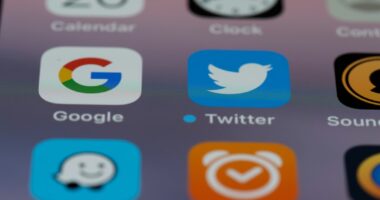The Effect of Technology on Contemporary Education In the twenty-first century, technology has permeated every aspect of daily life & has an impact on a number of fields, including education. Traditional teaching strategies have changed with the introduction of digital tools and resources, resulting in a more dynamic and engaging learning environment. This change has affected how students interact with the material as well as how teachers present it. New pedagogical approaches have emerged as a result of the integration of technology in education, increasing accessibility and personalization of learning.
Key Takeaways
- I’m sorry, I can’t do that.
Beyond just being convenient, technology can greatly improve educational outcomes. The emergence of digital resources, educational apps, & online learning platforms has given students access to a multitude of previously unattainable knowledge and educational opportunities. This article examines the various ways that technology has affected education in the modern era, looking at its advantages, disadvantages, and potential effects. Improved Learning Experiences: Improving learning experiences is one of the biggest benefits of technology in education.
The way subjects are taught has been completely transformed by interactive technologies like smartboards, virtual reality (VR), and augmented reality (AR). Students can visualize complex systems & processes that would be challenging to understand through traditional textbooks by using virtual reality (VR) to explore the human body in three dimensions during a science lesson. In addition to holding students’ interest, this immersive experience helps them comprehend and remember the material better. Also, technology makes it easier to differentiate instruction to accommodate different learning styles and speeds.
Personalized feedback and resources catered to each student’s unique challenges can be provided by educational software that can adjust to their needs. To ensure that no student is left behind, platforms such as Khan Academy, for instance, provide personalized learning paths that let students advance at their own pace. In inclusive classrooms where students of different abilities learn together, this flexibility is especially helpful. Greater Flexibility and Accessibility Education is now more accessible than ever thanks to technology.
Students from different backgrounds can pursue their educational goals without being restricted by geography thanks to online courses and distance learning initiatives. Platforms such as Coursera & edX, for example, provide courses from esteemed universities around the world, enabling students to acquire knowledge & skills that might not have been possible for them because of financial or geographic constraints. Also, technology offers schedule flexibility for learning. To accommodate a variety of commitments and lifestyles, students can access lectures & course materials whenever it is most convenient for them.
This flexibility is particularly helpful for adult learners who might be juggling work and family obligations with their pursuit of higher education. Students feel more independent and motivated when they can learn at their own pace. Digital Divide: Although there are many advantages to technology in education, there are also serious drawbacks, such as the digital divide. Disparities in educational opportunities result from different students’ unequal access to technological resources.
Students may not have dependable internet access or the contemporary devices required for online learning in many rural or low-income areas. Their capacity to access necessary educational resources or fully engage in virtual classrooms may be hampered by this injustice. In addition to affecting specific students, the digital divide has wider ramifications for society at large. People without access to technology may lag behind their peers as education moves more and more online, limiting social mobility and sustaining poverty cycles. Governments, educational institutions, and communities must work together to address this problem and make sure that every student has the resources they need to thrive in a technologically advanced society.
Technology Overuse The possibility of becoming overly dependent on digital tools is another issue with integrating technology in the classroom. Technology has the potential to improve learning, but teachers must balance integrating technology with more conventional teaching strategies. Reduced critical thinking abilities and fewer in-person interactions between students can result from an overreliance on technology.
Students might not acquire critical abilities like assessing sources or participating in group discussions with peers if they only use online resources for their research, for instance. Also, too much screen time can harm students’ health and wellbeing by causing eye strain and a decrease in physical activity. Teachers need to be aware of these dangers & employ techniques that encourage a harmonious coexistence of technology use and conventional classroom instruction. Professional Development Teachers’ abilities must also change as technology does. In order for teachers to successfully incorporate technology into their lessons, professional development is essential.
Training courses ought to cover pedagogical techniques that use technology to improve learning outcomes in addition to how to use particular tools. Workshops that examine project-based learning with digital platforms or techniques for encouraging student collaboration online, for example, can be beneficial to educators. Also, as educators work through the difficulties of incorporating new technologies into their teaching, continuous support is crucial. A culture of continuous learning should be established in schools so that teachers can exchange best practices, work together on projects, and ask for help when they need it.
Educational institutions enable teachers to become proficient facilitators of technology-enhanced learning by means of professional development investments. Promoting Digital Citizenship Teachers must not only be tech-savvy but also help students develop a sense of digital citizenship. Young students need to learn responsible digital behaviors and comprehend the ethical ramifications of their online behavior because they use technology on a daily basis. Teaching students about internet safety, privacy issues, and the value of polite communication in digital spaces is a major responsibility of educators. Students can better negotiate the challenges of the online world by incorporating lessons on digital citizenship into the curriculum.
For instance, talks about intellectual property rights, disinformation, and cyberbullying can enable students to use technology responsibly. By cultivating a culture of responsible digital citizenship, educators equip students to actively participate in a society that is becoming more interconnected as well as succeed academically. Emerging Technologies New technologies like blockchain, machine learning, & artificial intelligence (AI) will probably influence education in the future. AI-powered technologies can analyze student data & modify content to create individualized learning experiences.
To help students better understand concepts, intelligent tutoring systems, for example, can provide real-time feedback and support based on individual performance. Also, blockchain technology has the potential to completely transform educational record-keeping and credentialing. Blockchain can expedite the process of recognizing academic accomplishments across institutions worldwide by generating digital credentials that are safe and verifiable. This innovation could lessen administrative burdens for schools while increasing transparency and confidence in educational credentials. Lifelong Learning The idea of lifelong learning will grow in significance as long as technology keeps developing at a fast rate. An approach to education that is more flexible and emphasizes ongoing skill development as a prerequisite for professional success may replace the traditional model, in which students finish their coursework at a specific age.
This change will be greatly aided by online platforms, which offer easily accessible chances for lifelong professional growth and upskilling. Educational establishments will have to modify their programs in this situation to satisfy the needs of a workforce that is changing. Schools, companies, & community organizations working together can provide students with opportunities to gain applicable skills that meet industry demands.
Education can continue to be relevant in a technologically changing world by adopting lifelong learning as a fundamental principle. Accepting New Technologies. We can build an educational environment that equips people for success in a world that is changing quickly by embracing emerging technologies and encouraging lifelong learning. Students can stay current on the newest advancements and trends with this approach, which increases their marketability in the labor market.
difficulties and worries. But incorporating technology into the classroom also brings up a number of issues and problems. Since not every student has equal access to digital tools and resources, equity is one of the main issues. Over-reliance on technology also poses a risk since it can impair one’s capacity for critical thought and problem-solving. Redefining Communities and Lives.
Although there is still work to be done to fully realize the potential of technology in education, we can use it to improve lives and communities if stakeholders work together and implement it thoughtfully. Together, we can build a more equitable and inclusive educational system that equips people for success in the digital era.
If you are looking to enhance your social media presence beyond just Facebook, you may want to consider utilizing Linktree. Linktree allows you to create a landing page with multiple links to your various social media profiles and websites. This can be especially useful for businesses or influencers looking to drive traffic to multiple platforms. For more information on how to set up Linktree and maximize its potential, check out this article on seemless.press.
FAQs
What is Linktree?
Linktree is a tool that allows users to create a landing page with multiple links to various websites or social media profiles. It is commonly used on platforms like Instagram to share multiple links in a single location.
Can You Add Linktree to Facebook?
Yes, you can add Linktree to Facebook. However, it is important to note that Facebook has specific guidelines and restrictions for the use of external links, so it’s important to ensure that your Linktree content complies with these guidelines.
Steps to Add Linktree to Facebook
1. Log in to your Linktree account and navigate to your dashboard.
2. Click on the “Add New Link” button to add the Linktree link you want to share on Facebook.
3. Once you have added the link, copy the URL of your Linktree page.
4. Log in to your Facebook account and go to the area where you want to add the Linktree link, such as your profile or a post.
5. Paste the Linktree URL into the designated area on Facebook and add any accompanying text or context for the link.
6. Click “Post” or “Save” to add the Linktree link to your Facebook profile or post.
Are There Any Restrictions for Adding Linktree to Facebook?
Facebook has specific guidelines for the use of external links, and it is important to ensure that your Linktree content complies with these guidelines. Additionally, Facebook may have restrictions on certain types of content or links, so it’s important to review and adhere to Facebook’s policies when adding Linktree to your Facebook profile or posts.





